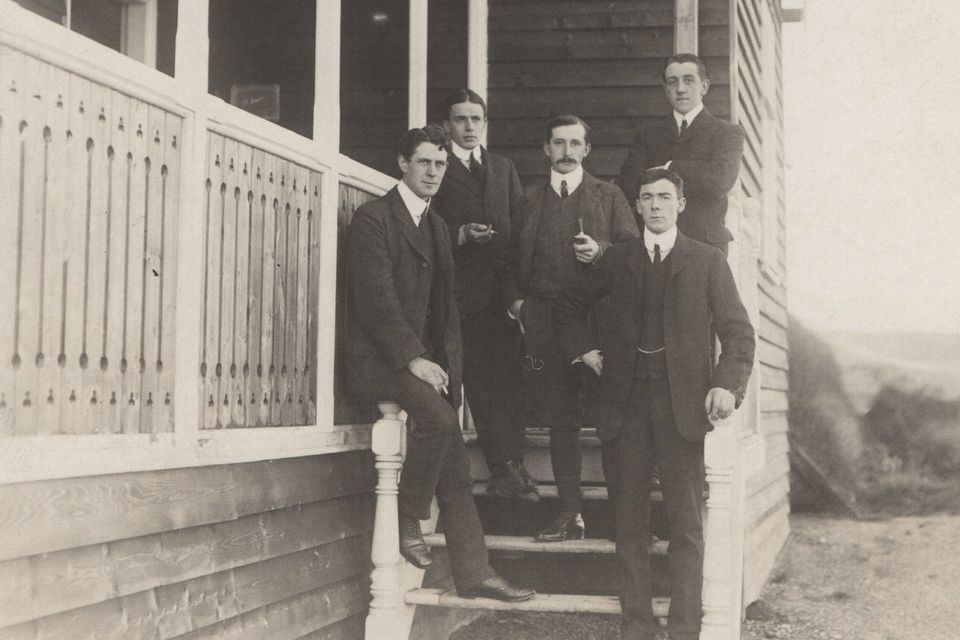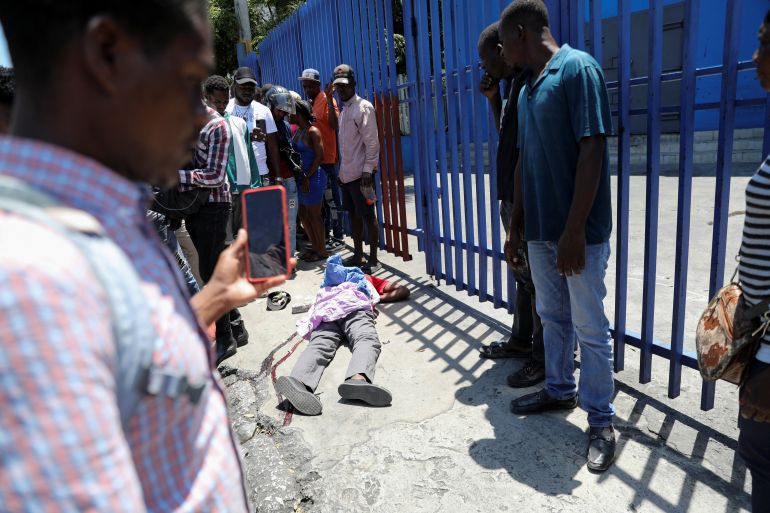TODESFETISCH
A photograph of Titanic’s senior wireless operator Jack Phillips with other operators at the Marconi station outside Clifden
Historic Irish photographs which show Titanic wireless operator Jack Phillips at a Co Galway station are coming up for sale this month.
The pictures were taken at the transatlantic Marconi wireless station at the coastal town of Clifden.
They show the station where the first commercial wireless service was established between the Old and New worlds, and a picture of staff, Mr Phillips, who died in the Titanic disaster in 1912.
The Titanic, which was built by Harland and Wolff in Belfast, sank on its maiden voyage from Southampton to New York. Around 1,500 people died in the disaster.

The barometer that hung in Ernest Shackleton’s cabin on his final voyage
While it was known that Titanic wireless operator Mr Phillips worked at the Clifden station, no photographs of him there have emerged until now.
The original press photograph was taken in 1908 but unpublished. It shows Mr Phillips in the company of other operators at their bungalow at the station in Derrygimlagh, outside Clifden — later burned down by the IRA.
The Clifden photograph also includes William Entwhistle, chief engineer and PJ Tracey, who was the first man to transmit a transatlantic message from the new service, when British, American, Italian and Canadian flags were hoisted on the masts supporting the aerial in celebration.
Read more
Sinking of the Titanic: ‘I never saw my father crying in my lifetime until then’
Iconic Titanic film prop sells at auction for more than £550k
Full steam ahead for Scotsman’s project to create replica of the Titanic’s whistles
Mr Tracey also received radio pioneer Guglielmo Marconi’s reply from Glace Bay, Nova Scotia, over 3,200km away.
Mr Phillips appears on the 1911 Irish census at Clifden and had two stints at the station, which he once described as a “dreary hole” in a letter to his sister.
The picture is described as “of extreme wireless and Titanic historical importance,” by Andrew Aldridge of Henry Aldridge and Sons, which will sell lot 214 on Saturday, April 27 in Devizes, Wiltshire.
It has an estimate value of up to £1,280. Included is an image which was published in the Daily Mirror under the title “Mr Marconi’s Triumph: Pictures of the Irish Station.”

The commemorative anchor made by Titanic crewman William McCarthy
It was at the Clifden station that John Alcock and Arthur Brown landed, having made the first transatlantic flight in 1919, long before Lindbergh’s solo crossing in 1927.
There are also important items related to the Irish-born polar explorer Ernest Shackleton, who came from Kilkea, Co Kildare — with a museum now dedicated to him in Athy.
Estimated at up to £8,550 is a barometer that hung in Shackleton’s cabin on his final voyage in 1921-22. A signed letter states: “This aneroid barometer was taken to the Antarctic and was screwed up in Sir Ernest Shackleton’s cabin on R.Y.S. Quest.”
A film-prop piece of wood, on which the character Rose survives in the 1997 movie Titanic recently sold for $715,000 (£567,000). Estimated at only £256, however, is a post-disaster commemorative anchor made by an Irish Titanic crewman.
In faded script it says: “Constructed by AB seaman William McCarthy, a survivor of the tragedy of the White Star liner Titanic.”









 Takashi
Takashi (@masaminya)
(@masaminya) 


